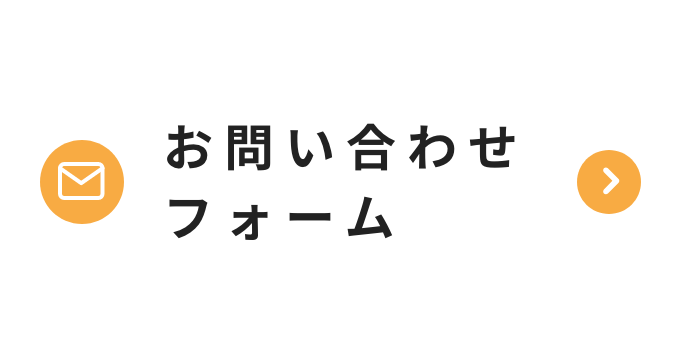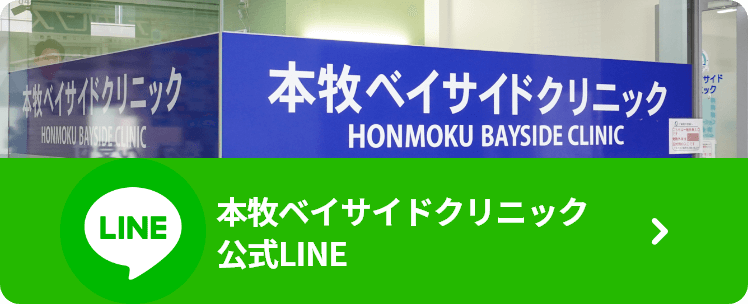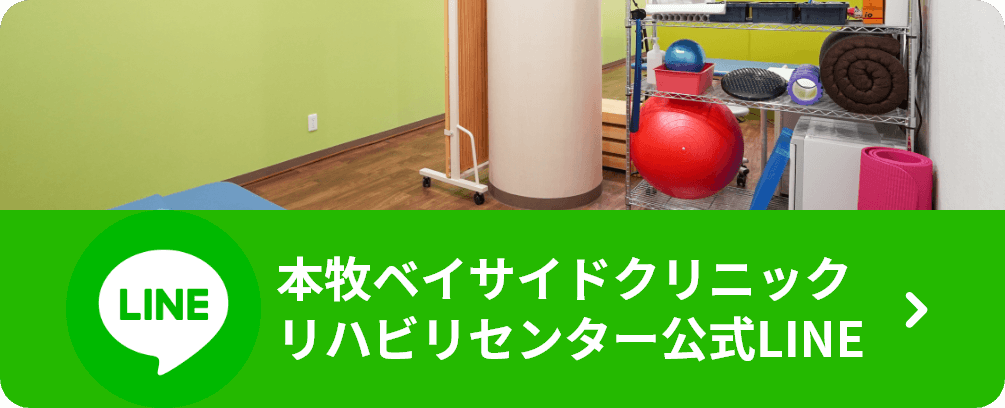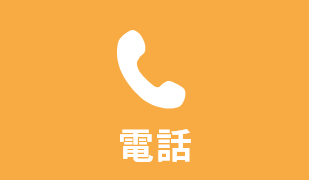What is pediatric department
The Pediatric Department specializes in providing comprehensive health and medical care for infants, children, and adolescents from birth up to the age of 16. Within the realm of medicine, pediatrics focuses on addressing the unique healthcare needs of young individuals during their formative years. In alignment with this dedication, our medical devices adhere to the pediatric definition, encompassing the age range from birth through 16 years old.
Common Diseases and Symptoms
If you notice any of the following symptoms, we kindly urge you to visit the hospital at your earliest convenience. Prompt medical attention is crucial, particularly for children, as illnesses can escalate rapidly. Furthermore, vaccinations play a pivotal role in preventing the exacerbation of diseases. Administering vaccines not only safeguards your child’s health but also curtails the dissemination of infections within the community.
In addition to infections, a variety of other symptoms may appear. Please let us help your child to have a rich and healthy life both mentally and physically. If you have any concerns or questions, please contact us. Our doctors and staff will do their best to provide the best treatment and methods. We pride ourselves on offering compassionate care tailored to the unique needs of each child. Rest assured, your child’s well-being is our top priority.
Common Diseases and Symptoms
Respiratory Symptoms
- Runny nose
- Red and watery eyes
- Sore throat
- Slightly raised temperature
- Cold temperature (fever) (although may not be present and is rarely over 38℃)
- Dry and persistent cough
- Difficulty feeding
- Rapid or noisy breathing (wheezing)
Influenza
- Influenza viruses include Type A (H3N2) and Type A (H1N1) pdm09. Type A and Type B are the most common types of influenza viruses that cause problems in daily life. Symptoms such as fever, cough, joint and muscle pain, and diarrhea are often observed, mainly due to droplet infection.
- Complications include encephalitis and encephalopathy, which can cause loss of consciousness and convulsions in young children. Other complications include pneumonia and Reye's syndrome (encephalopathy) when aspirin is used as an antipyretic. Anti-influenza medications are effective.
- The relationship between anti-influenza drugs and abnormal behavior has become an issue, but abnormal behavior can occur even without the use of anti-influenza drugs. Abnormal behavior is said to be more common in minors in their teens, and although it is rare in infants and young children, the behavior of affected children should be monitored carefully.
COVID
- Coronavirus is a droplet infection.
- It is characterized by one or a combination of symptoms including fever, runny nose, nasal congestion, cough, sore throat, and headache. Symptoms may last from 3 or 4 days to 1 week.
- Children may also have sequelae.
RS Virus (Respiratory Syncytial Virus)
- This disease is caused by droplet infection or contact infection (contact with toys contaminated by droplets). Infants and young children are at the highest risk of contracting the RS virus through contact with toys.
- It is a typical disease that causes cold symptoms, most common during the winter season, and is characterized by fever, cough, and runny nose.
- When infants are infected for the first time, they may have difficulty breathing or apnea attacks. It can be life-threatening, especially in infants under one year of age, premature infants, and those with underlying medical conditions such as heart disease. Acute bronchiolitis develops, and expectorants and bronchodilators are ineffective. Re-infection may occur, but symptoms are said to lessen with each infection.
- Premature infants and those with underlying disease can be prevented with RS virus antibodies (palivizumab: brand name Synagis).
- Infection in infancy is said to increase the incidence of bronchial asthma later in life. When the epidemic period coincides with influenza, it can be difficult to distinguish between the two based on clinical symptoms.
- Rapid tests are available, but their use is limited because they are not covered by insurance except for hospitalized patients and infants.
Adenovirus Infection (Human Adenovirus)
- Adenovirus infections are caused by droplet or contact infection. Conjunctivitis is easily transmitted by contact with eyes and tears. It is important to note that the virus is shed in the stool for about 2 weeks after its disappearance.
- There are 49 different serotypes of adenovirus, and infection may occur annually or more than once a year. The sites susceptible to infection vary depending on the type of virus.
Pharyngoconjunctival Fever (PCF)
- Pharyngoconjunctival fever [PCF] is also called pool fever in Japan. It is characterized by high fever that lasts for about 5 days, redness and pain of the pharyngeal tonsils, conjunctival redness, running tears, and eye discharge.
Exudative Tonsillitis or Pharyngitis
- Exudative tonsillitis or pharyngitis is diagnosed when the pharyngeal tonsils are covered with mucous membrane hyperemia and white moss. It is characterized by redness and pain in the throat and a high fever that lasts for about 5 days.
Conjunctivitis (Pinkeye Inflammation)
- Epidemic conjunctivitis causes corneal redness, running tears, eye discharge, and photophobia. It is characterized by yellow eye discharge and is highly contagious.
- Infectious gastroenteritis with abdominal pain and diarrhea, and intestinal calculi with severe abdominal pain may also occur. In older children, hemorrhagic cystitis may occur.
Human Staph Pneumovirus (hMPV)
- Epidemic in late winter and spring due to contact infection.
- Like RS virus, it presents with respiratory symptoms such as coughing, and lower respiratory tract infections such as pneumonia and worsening asthma are seen. Infants and children are affected. Children are said to have had at least one case by the age of five. The virus is excreted for 1-2 weeks.
- In recent years, the use of a decompression kit has been covered by insurance for patients under 6 years of age with a strong suspicion of pneumonia based on facial diagnosis or chest auscultation, allowing for outpatient diagnosis.
Major Respiratory Diseases
Asthma
- Asthma is a major noncommunicable disease (NCD), affecting both children and adults, and is the most common chronic disease among children.
- Inflammation and narrowing of the small airways in the lungs cause asthma symptoms, which can be any combination of cough, wheeze, shortness of breath, and chest tightness.
- Inhaled medication can control asthma symptoms and allow people with asthma to lead a normal, active life.
- Avoiding asthma triggers can also help to reduce asthma symptoms.
Bronchiolitis
- This disease is caused by viral or bacterial infection of the bronchial tubes. It is often followed by symptoms of a cold. Fever and a severe cough with phlegm are common. The patient may also breathe with a wheezing or wheezing sound.
Croup
- Croup is a narrowing of the airways in the back of the throat caused by a viral infection or allergic reaction, and is characterized by a cough that sounds like a seal bleating or a dog barking.
- There is no single disease called "croup," but rather a variety of causes that produce similar symptoms, hence the term "croup syndrome."
- It is a common symptom in children, especially those between the ages of 6 months and 3 years.
Whooping Cough
- Whooping cough is an acute respiratory tract infection, mainly characterized by coughing, and is caused by a special bacterium called Bordetella pertussis. Because it is not an infection with lifelong immunity (once you are infected, you will not get it again), you can get whooping cough as many times as you want, just like the common cold, and it can be life-threatening, especially for infants under 6 months, such as respiratory failure.
- The effective preventive method is vaccination. Routine immunization is conducted based on the Immunization Law. The immunizing effect of immunization lasts for about 5 to 10 years. Since the bacteria can be shed even in mild cases, caution should be exercised against infection when there are newborns and infants who have not been immunized. In addition to childhood immunization, it is recommended that families with infants (or families planning to give birth) be immunized with an additional dose of pertussis-containing vaccine.
Mycoplasma Infection
- Mycoplasma pneumoniae (the smallest bacteria without cell walls) is transmitted by droplet infection. It starts with upper respiratory tract symptoms such as fever, fatigue, and cough. The fever and cough persist, and in some cases bronchitis develops into pneumonia. The course of the disease may last 1-2 weeks, and the cough may be prolonged. The general condition of the patient does not deteriorate much despite the fever and the long course of the disease.
- In some cases, a rash may appear. In children, macrolide antimicrobial agents can be used, and the disease tends to improve within a few days.
- A rapid kit is available, but it may give false-negative results in the early stages of the disease, so careful judgment is required.
- The infection is highly infectious during the untreated period but becomes less infectious when appropriate antimicrobial agents (macrolides) are administered, and symptoms tend to improve.
Major Digestive Symptoms
- Diarrhea
- Vomiting
- Abdominal pain
- Nausea
- Unexplained bloody stools
- Vomiting of blood
- Weight loss
- Constipation
- Convulsive temperature (fever) (although may not be present and is rarely over 38℃)
Infectious Gastroenteritis
(e.g., Norovirus, Rotavirus, Parasite, Bacteria, Influenza, COVID)
- Infectious gastroenteritis is an infectious disease caused by pathogens such as bacteria and viruses. Gastroenteritis caused by viral infections is the most common cause and is prevalent from fall to winter every year.
- Pathogens that cause gastroenteritis include noroviruses and rotaviruses, as well as bacteria and parasites.
- Pathogens can be transmitted either by touching the mouth with hands contaminated with pathogens (contact infection) or by eating contaminated food (oral infection).
- Infection symptoms may be similar to a mild cold.
Gastroesophageal Reflux
- Inflammation in the stomach, small intestine, and large intestine is called gastroenteritis, the majority of which is infectious gastroenteritis. The main cause is viruses (about 70% of all cases), most commonly rotaviruses and noroviruses, followed by bacteria (10-20% of all cases).
- Pathways of infection include infection by touching the mouth with hands covered with pathogens (contact infection) or by putting contaminated food or water in the mouth (oral infection).
- If the patient is very nauseous, give them a spoonful of the drink slowly, sip by sip, allowing time for the drink to settle, as drinking it all at once will cause the patient to vomit again.
Pediatric Constipation
- Constipation disorder begins in childhood or infancy. If left untreated, constipation will progressively worsen.
- If constipation is not corrected, the child will suffer from constipation for the rest of their life, as they will not be able to develop the ability to defecate in the future.
- In addition, if the habit of defecation is not firmly established, it will have a negative impact on the mental health of the child. It is important to treat constipation properly because it can cause irritability, hyperactivity, learning disabilities, and other problems that interfere with one's lifestyle.
- To prevent constipation from becoming an ongoing condition, it is important to help the child defecate with the use of medication and to watch over the child patiently until the defecation function is well developed.
- Both the child and the parent/guardian should continue treatment in a way that is comfortable for both of them.
Pediatric Diarrhea
- Pediatric diarrhea is when a child passes loose or watery stools more often than usual. It can come with symptoms like loss of appetite, vomiting, weight loss, tummy pain, fever, or blood in the stool. Severe or ongoing diarrhea can lead to dehydration, which is when the body loses too much water. Even without dehydration, persistent diarrhea can make a child lose weight or not gain weight as they should.
- It's a common issue in children, with millions of cases worldwide each year. In the United States, about 9% of children under 5 die due to diarrhea-related complications annually.
Pediatric Urologic Disease
Pediatric urinary symptoms
- Frequent trips to the restroom
- Getting up in the middle of the night to urinate
- Urine leakage
- Lack of vigor in urination
- Difficulty in passing urine
- Feeling of residual urine
- Pain during urination
- Feeling unrefreshed after urination
- Pain after urination
- Blood in the urine
- Positive urine test results (indicating blood or protein in the urine)
- Discomfort in the urethra or perineum
- Recurrent or unresolved cystitis
Urinary Tract Infection in Children [UTI]
Urinary tract infections occur when bacteria enter the bladder through the urethra. Girls, who have a shorter urethra than boys, are more susceptible to these infections. However, there is no significant difference in frequency between boys and girls until the age of 2. If the infection remains in the bladder, it is called cystitis, and if bacteria travel from the bladder to the kidneys, pyelonephritis occurs. Urinary tract infections are diagnosed by confirming the presence of bacteria in the urine.
In infants, urinary tract infections often present with systemic symptoms such as fever (38.5°C or higher) and irritability. Infants may also experience additional symptoms such as abdominal or back pain, painful urination, or wetting themselves despite not typically having accidents. Additionally, urine may have a stronger odor or contain blood.
School-aged children and older children typically experience symptoms related to urination, such as urgency, frequency, and painful urination, with hematuria occasionally observed. However, the presence of a high fever accompanying these symptoms may indicate pyelonephritis rather than just cystitis at any age.
In cases of cystitis without fever, patients can usually be completely cured after 3 days of antimicrobial therapy. Symptoms typically improve within 24 hours after starting antimicrobial treatment.
Enuresis (Nocturnal) [Bed-Wetting]
- Bedwetting, or nocturia, in children aged 5 or older is when they wet the bed during sleep at least once a month for 3 months. Around 10% of 7-year-olds experience this, but about 15% naturally stop each year. However, some continue into adulthood. Treatment, like lifestyle changes, can double or triple the cure rate and speed up recovery.
- If bedwetting persists into elementary school, seeing a pediatrician or urologist is advised. Children with bedwetting often have lower self-esteem, but curing it can improve this. It's not due to parenting or the child's personality but an arousal disorder, immature bladder function during sleep, and excessive nighttime urination.
Pediatric Skin Diseases
The skin serves as a vital barrier, shielding the body from external threats while also retaining moisture. This crucial role is primarily fulfilled by the outermost layer of the epidermis, known as the stratum corneum, which interfaces with the external environment.
In children, the stratum corneum is relatively thin, and the secretion of sebum is inconsistent, resulting in an underdeveloped barrier function. Consequently, children are more susceptible to skin issues such as rashes, bacterial, and viral infections. Therefore, ensuring proper care of children’s skin and maintaining its barrier function are essential for promoting skin health.
We can offer guidance on how to effectively care for your child’s skin.
Infantile Eczema [Baby Rash]
![Infantile Eczema [Baby Rash]](/wp-content/uploads/pediatrics-en_img01.png)
- Infantile eczema refers to various forms of eczema appearing on infants' skin typically between 2 weeks and 1 year of age.
- It encompasses conditions like heat rash, newborn acne characterized by red patches, seborrheic eczema with yellowish-white scabs primarily on the scalp, eyebrows, and forehead, as well as any eczema lacking a definitive diagnosis of atopic dermatitis.
Sudamina [Sweat Rash]
- Sweat rash manifests as fine blisters or boils on the skin following profuse sweating, commonly occurring during warmer months, especially in children.
- While sweat rash itself is generally asymptomatic and resolves spontaneously, when accompanied by eczema, it can cause itching. Proper skin care is crucial, and topical agents should be used to address itching if present.
Sudamina [Sweat Rash]
![Sudamina [Sweat Rash]](/wp-content/uploads/pediatrics-en_img02.jpg)
- Sweat rash manifests as fine blisters or boils on the skin following profuse sweating, commonly occurring during warmer months, especially in children.
- While sweat rash itself is generally asymptomatic and resolves spontaneously, when accompanied by eczema, it can cause itching. Proper skin care is crucial, and topical agents should be used to address itching if present.
Contagious Impetigo [School Sore]
- Contagious impetigo is a skin ailment characterized by scabs or blisters appearing sporadically on the body and spreading to other areas over time.
- It results from bacterial infection of the skin surface, primarily by Staphylococcus aureus or Streptococcus hemolyticus. Children are often affected, with triggers including nasal colds, eczema, insect bites, or injuries.
- Treatment involves oral medication and topical ointments targeting the bacteria. Topical steroids may be used to alleviate itching and inflammation in some cases.
- Preventive measures include maintaining clean skin, proper eczema management, short fingernails, and thorough handwashing.
Atopic Dermatitis [Eczema]
![Atopic Dermatitis [Eczema]](/wp-content/uploads/pediatrics-en_img03.jpg)
- Atopic dermatitis is characterized by dry, easily irritated skin that worsens upon exposure to allergens or irritants.
- Allergens may include dust mites, pollen, and certain foods, while irritants encompass sweat, clothing, detergents, and stress.
- Treatment involves mitigating irritants, diligent skin care, and medication (oral and topical). Adequate moisturization and appropriate use of topical steroid medication are essential.
- Consultation with our dermatology department, available on separate days, is recommended for comprehensive care.
Diaper Rash

- Diaper rash occurs due to skin irritation from ammonia and enzymes in urine and stool, resulting in red patches and sores where the diaper contacts the skin.
- Thorough cleansing with warm water and application of zinc ointment or Vaseline are recommended. In severe cases, a mild topical steroid may be necessary.
- Proper diagnosis is crucial, as the diaper area is also susceptible to candida dermatitis caused by fungal infection.
Molluscum Contagiosum [Water Warts]
- Molluscum contagiosum is a viral skin infection characterized by small dome-shaped papules, often occurring in clusters.
- It typically resolves spontaneously in children, but those with sensitive skin or atopic dermatitis are at higher risk of spreading it.
- Treatment options include removal using liquid nitrogen or waiting for natural healing, with special consideration for cases of atopic dermatitis.
- While transmission through pool water is unlikely, caution should be exercised with shared items like beat boards or flotation rings.
Verruca Vulgaris [Common Warts]
![Verruca Vulgaris [Common Warts]](/wp-content/uploads/pediatrics-en_img05.jpg)
- Verruca vulgaris is caused by human papillomavirus (HPV) infection and commonly affects the soles of the feet and fingers.
- Cryotherapy, involving freezing the affected area with liquid nitrogen, is the primary treatment. Multiple sessions may be required for complete resolution.
- Transmission typically occurs through small wounds rather than healthy skin, making prevention through proper wound care essential.
Infectious Diseases with Skin Symptoms
Varicella [Chickenpox]
- Diagnosis can be challenging initially, as the Varicella-zoster virus manifests with small erythema resembling cold symptoms.
- As the rash progresses and spreads throughout the body, including the hair, diagnosis becomes clearer. The rash evolves from papules to blisters with a concave apex, eventually forming scabs.
- Antiviral agents are effective, although spontaneous resolution typically occurs within 7 to 10 days. Recovery with antiviral treatment usually takes around 5 days.
- Severe cases, though rare, may lead to complications like pneumonia, encephalitis, and thrombocytopenia, especially in children on steroids.
Shingles [Herpes Zoster]
- Shingles results from the reactivation of the varicella-zoster virus, which remains latent in ganglia post-chickenpox infection. The reactivated virus forms clusters of painful, pruritic blisters along innervated sites.
- In some instances, blisters may develop in the auricle and external auditory canal, causing facial paralysis and dizziness, termed Ramsey-Hunt syndrome.
Measles
- Measles is caused by the airborne transmission of the measles virus, presenting initially with fever, cough, and subsequent appearance of white spots (Koplik spots) in the oral cavity.
- The rash emerges on the face, trunk, and extremities, tending to fuse and leave pigmented lesions upon resolution. In vaccinated individuals, symptoms may be atypical (modified measles).
- Complications may include respiratory deterioration, pharyngitis, pneumonia, and encephalitis, potentially leading to loss of consciousness and convulsions.
Rubella
- Rubella virus, transmitted via droplets, presents with symptoms such as fatigue, enlarged cervical lymph nodes, and a fine rash spreading from the face downward. The rash does not fuse and fever may or may not accompany it.
- Complications include encephalitis and thrombocytopenia resulting in petechial hemorrhage, with infection during pregnancy posing risks of congenital rubella syndrome in the fetus.
Mumps
- Mumps is characterized by painful swelling of the salivary glands, particularly the parotid and submandibular glands, due to droplet infection with the mumps virus. Unilateral or partial gland swelling may occur, with fever not always present.
- Complications encompass pancreatitis, aseptic meningitis, and, in post-pubertal individuals, orchitis in boys and ovaritis in girls.
Herpes Simplex (Herpes Stomatitis, Herpes Labialis
- Caused by herpes simplex virus types 1 (HSV-1) or 2 (HSV-2), herpes stomatitis and labialis present with blisters in the mouth, lips, and perioral area. Type 1 primarily causes these symptoms, while type 2 may result in blisters on the genitalia.
- Children with eczema, like atopic dermatitis, may experience worsened symptoms, known as Kaposi's varicella-like rash, with clustered blisters.
- Complications may include conjunctivitis and keratitis.
Roseola [Sixth Disease, Exanthema Subitum]
- Roseola, caused by human herpesvirus types 6 (HHV-6) and 7 (HHV-7), often follows fever with cold symptoms like cough and diarrhea, resolving around the time of fever reduction. It may lead to febrile convulsions.
- Some children may experience two sudden onsets of roseola, first with HHV-6 and then with HHV-7 infection, with the latter potentially going unnoticed.
Hands, Foot, and Mouth Disease
- Enterovirus infection, including coxsackievirus A and enterovirus A, results in small blisters on the hands, soles, and mouth, with possible involvement of extremities, buttocks, and body.
- Complications such as encephalitis and ataxia may occur, with the disease being transmissible through droplet infection and persistently shed in stools for weeks.
Erythema Infectiosum [Fifth Disease]
- Caused by parvovirus B19, erythema infectiosum spreads through droplets or contact with contaminated saliva or objects. It manifests with fever and characteristic erythema, often called "apple disease" in Japan.
- The rash appears on the face, upper extremities, thighs, and buttocks, resembling lace-like patches. It typically resolves within days to weeks but may persist or recur in some cases.
Herpangina
- Herpangina is caused by enteroviruses such as Coxsackie virus A, B, echovirus, and others, primarily transmitted via droplets.
- Symptoms include sudden high fever (38-40°C), sore throat, and reduced oral intake, with the pharynx exhibiting red blisters or ulcers. Fever typically lasts 2 days, rarely extending beyond 4 days.
- Complications may include encephalitis, ataxia, chest pain, and pinguecula. Careful attention is needed in the early stages as the virus is shed in droplets and stools for some time.
Streptococcal Infections
- Caused by group A and B streptococci, streptococcal infections manifest with symptoms such as fever, throat and tonsil inflammation, and erythema.
- The appearance of bloodshot eyes and strawberry-like bumps on the tongue is common, along with gastrointestinal symptoms like vomiting. Fine erythema may develop on the body, neck, and extremities, with skin peeling during recovery.
- Without adequate treatment, complications such as acute glomerulonephritis, rheumatic fever, and purpura may arise post-recovery.
- Rapid diagnostic kits are available and highly reliable for diagnosis. Streptococcal infections typically respond well to antimicrobial agents, with symptoms usually resolving within 24 hours after appropriate treatment.
Vaccination
Preventive vaccination is an important preventive measure against infectious diseases. Vaccination improves immune function and resistance to infectious diseases.
There are two main purposes of vaccination.
1:Preventing an individual from contracting an infectious disease
2:To prevent the spread of infection to those around you.
Type of Vaccine
Vaccines are medicines that weaken or eliminate the virulence (toxicity) of bacteria and viruses, making them safe for the body.
There are three types of vaccines, distinguished primarily by whether they are “live vaccines” or not.
For live vaccines, an interval of at least 27 days (4 weeks) is required before the next vaccination.
For other vaccines, there is no need to wait between doses, and they can be administered the day after the initial vaccination.
The variation in intervals between vaccinations is why we check the “date of the last vaccination and the type of vaccine” at each vaccination appointment.
Additionally, as a rule, it is necessary to allow 2 weeks before and after receiving other vaccines when getting the corona vaccine.”
Live vaccine
Live vaccines are derived from viruses and bacteria whose toxicity has been attenuated to reduce their virulence.
This approach induces immunity in a manner closely resembling natural infection, often requiring only a few inoculations to establish immunity.
However, as a side effect, individuals may experience very mild symptoms of the original disease.
Types of Live Vaccines:
Rota vaccine , Tuberculosis (BCG), Measles, Rubella, Mumps, Chickenpox(Varicella), etc.”
Inactivated Vaccine
Inactivated vaccines are produced by rendering viruses and bacteria incapable of infecting (through inactivation or sterilization), thus eliminating their virulence.
Unlike live vaccines, inactivated vaccines often necessitate more frequent inoculations, with the specific number of doses determined by the vaccine.
Types of Inactivated Vaccines
Hib vaccine , Pneumococcal, Hepatitis B, Pertussis, Polio, Japanese encephalitis, influenza, Hepatitis A, Meningococcal infection, HPV vaccine,etc.”
Toxoid
Toxins produced by bacteria play a crucial role in immunity against certain infections.
Toxoids are vaccines where the toxicity of the toxin is neutralized, retaining only its ability to induce immunity. They are categorized similarly to inactivated vaccines.
Types of Toxoid Vaccines
Tetanus, Diphtheria
How to make an appointment
We only offer vaccine reservations through our website. Please fill in the required information to make a reservation.
Children of elementary school age and older who wish to be vaccinated with the second combined vaccine(DT) and Japanese encephalitis second stage (4th dose) are not accepted during the pediatric outpatient hours. Please call to make an appointment with Dr. Negishi of the Department of Internal Medicine on Monday, Tuesday, Wednesday mornings, Thursdays, and Fridays.
★Japanese encephalitis
An additional vaccination at 9 years old. (Vaccination target: 9 to 12 years old)
★The second combined vaccine (DT) It is recommended for all children at age 11.
However, the Diphtheria-Tetanus (DT) vaccine is not effective against pertussis. Since the immunizing effect of pertussis declines after 4-12 years, an additional dose of pertussis-containing vaccine (triple combination (DPT or Tdap) vaccine after the age of 10 years instead of the routine two-in-one (DT) vaccine will help re-elevate pertussis antibodies and prevent whooping cough infection.
Precautions on the Day of Vaccination
On the day of vaccination, please ensure you do not have a fever at home and remember to bring the following documents with you.
Belongings
- Maternity Handbook
- Questionnaire
- Japanese Health Insurance card
- Medical ID cardChildren's medical →care certificate or Medical care →certificate for the elderly
if a medical examination is required.
People Who Are Not Eligible to Receive Vaccinations
- Children with a fever (37.5℃ or higher).
- Individuals suffering from acute illnesses.
In general, vaccinations should be postponed for children with acute and severe illnesses requiring medication, as the subsequent effects of the illness are unknown, and the vaccine's efficacy cannot be determined. - Individuals with a documented history of severe allergic reactions (anaphylaxis) to any ingredients included in the vaccines scheduled for the day.
- Other cases where the physician determines the patient is in an unsuitable condition.
VACCCINE AT YOUR OWN EXPENCE
MUMPS vaccine ¥6500
★Please contact us if you wish to receive other vaccination at your own expence.
→ほかの自費予防接種についてはご連絡ください。
For more infomation on vaccinations and vaccination intervals, please also visit this website.
Guide to vaccination for children in YOKOHAMA
CDC Vaccines and Immunizations in the US
Infant Health Examination at Medical Institutions
Enclosed within the medical checkup ticket provided upon issuance of the Maternal and Child Health Handbook is the consultation sheet (Medical Institution Infant Health Examination Examination Examination Sheet), which allows for three complimentary health checkups at medical institutions.
Program Coverage
The expenses for health examinations and childcare consultations are covered by public funds. Please note that treatment costs for illnesses are not included.
Consultation Frequency and Validity Period
Up to three consultations are available before the child reaches 12 months of age (before 13 months).
★Our clinic accepts patients only after the second visit
(② Infants aged 5-8 months /③Infants aged 9-12 months )
★Please be informed that the initial checkup for infants aged 0-3 months is not conducted.
Please ensure to utilize the medical checkup slip enclosed within the medical checkup ticket booklet provided with the Maternal and Child Health Handbook issuance within the stated validity period.
It is imperative to undergo the health examination at a medical institution within Yokohama City during the specified validity period.
*Kindly note that we do not issue replacements for lost medical checkup tickets. Please refrain from discarding the medical checkup ticket booklet after delivery.
Designated Medical Institutions for Checkups
Checkups are exclusively available at medical institutions within the city conducting infant health examinations.
Our clinic offers the second checkup for infants aged 5-8 months and the third checkup for those aged 9-12 months.
Please ensure to make advance reservations through the website.
*Checkups are not accessible at medical institutions outside of Yokohama City. Additionally, reimbursement for expenses incurred at medical institutions located outside of Yokohama City is not available.
Belongings
- Maternity Handbook
- The consultation sheet
(Medical Institution Infant Health Examination Examination Examination Sheet)
Before visiting our clinic, we kindly ask you to complete the section enclosed by the thick lines. - diapers
- Japanese Health Insurance card
- Medical ID cardChildren's medical
(care certificate or Medical care certificate for the elderly)
How to fill out the consultation sheet
(Medical Institution Infant Health Examination Examination Examination Sheet)
Before visiting our clinic, we kindly ask you to complete the section enclosed by the thick lines.
- 母子健康手帳番号→Maternity Handbook Number
- 住所・・・Address
横浜市___区・・・ YOKOHAMA sity______ ward
電話・・・Phone number - 子の氏名・・・Child,s name
フリガナ・・・If you can write your child`s name in Japanese KATAKANA, please so do. - 生年月日・・・Your child`s birth day
年・・・A.D
月・・・ month
日・・・DayWha - 満__か月・・・Your child`s month
- 第___子・・・What number child is this?
- 男/女・・・Child`s sex
男・・・Male
女・・・Female - 保護者氏名・・・The name of your parent or legal guardian
What is infant health check-up
Information Regarding the 5-8 Months (Less than 9 months ) Infant Health Check-up
The primary objective of the 5-8 month check-up is to thoroughly assess the baby’s growth and development while proactively identifying any potential issues. As many infants typically demonstrate the ability to hold their heads up, turn over, and sit up during this stage, the examination focuses on monitoring their developmental milestones. Additionally, the check-up encompasses evaluating the progress of weaning and teething, along with nurturing positive mother-child and family relationships.
️Information Regarding the 9-12 Months (Less than 13 months ) Infant Health Check-up
At the 9-12 months checkup, we assess the development of motor skills such as standing and walking independently, as well as the child’s social interactions, including their ability to use simple words like “Mommy” and “Daddy” and engage in toy play. Additionally, we examine the openness of the fontanel and ensure any scrotal hydrocele has resolved. We understand that mothers may experience increased stress and anxiety due to childcare responsibilities and sleep deprivation, so please feel free to discuss any concerns with us during the visit.
Please consult with us for other checkups not listed above, which will be at your own expense.
ONLY PEDIATRIC is available on Wednesday afternoon
No fever or No cold symptoms
From 2 PM to 6PM(noon)
(School age under 15years old)
⇨ A female pediatrician will examine you.
If your child has cold symptoms without fever, we will accept you only from 4:30PM to 5:45PM.
Please enter through the general outpatient entrance only during the above hours.
If your child is seen on Wednesday for fever symptom, they will be seen only from 4:30PM-5:30PM in the Fever Outpatient Clinic.
Please be aware that the waiting area is outside.

